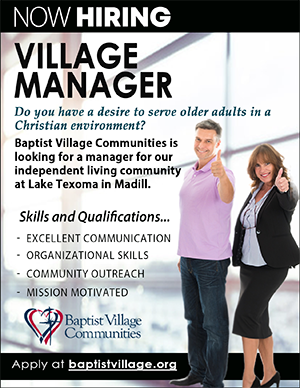Substance abuse in Oklahoma continues to be a weight that drags our culture down. With the recent documentary “Crystal Darkness” shown across our state in an all-out media-information blitz, we are now being made aware of the tremendous price that is being paid because of methamphetamine addiction. The question staring us in the face is “what are we going to do about the substance abuse problems in our communities?” It is one thing to say we are against substance abuse and preach against it from our pulpits. But we must be pro-active to make an impact within our cities and towns.
Phase I of the Crystal Darkness Oklahoma plan has been completed with the documentary giving us the sobering facts of meth addiction within our state. Typical users are between the ages of 18-38. Five out of six kids going into foster care come from meth homes. A closer look reveals that every community has been affected by this growing drug problem. Some authorities within the state say the figures maybe as high as 90 percent of crimes committed in Oklahoma are drug related. The documentary makes it very clear that methamphetamine is not just a big city problem; it also is showing up in small-town Oklahoma.
Phase II of the Crystal Darkness Oklahoma plan is a comprehensive, aggressive approach that addresses prevention through education, vigorous law enforcement and treatment of meth addicts. This is where communities and churches must get involved. We simply cannot sit on the sidelines while our neighborhoods go up in “meth” smoke.
The state of Oklahoma has taken steps to curtail the meth problem. We are one of several states making pills containing pseudoephedrine, the drug essential to producing meth, harder to obtain by placing them behind pharmacy counters and requiring buyers to show identification and sign a log to purchase them. This law has produced an 80 percent reduction in meth lab seizures. We need to encourage the law enforcement agencies that are on the front lines attempting to shutdown these meth labs and prosecute dealers.
We must do everything possible to protect children, who are often innocent victims of meth use and production. This includes updating laws governing child abuse by meth users. The law should specify that cooking meth around kids is child abuse. Protecting children also means teaching them at a young age about the dangers of substance abuse. Opportunities present themselves at Children’s Falls Creek and associational children’s camps to teach the dangers of drugs and alcohol. Kids need to see that the Bible is not silent on the subject and, hopefully, some good healthy fear of drug abuse and addiction will stop kids from choosing such a destructive path.
Many people in our churches probably do not know much about the drug methamphetamine and its effects. Pastors and leaders need to take advantage of Substance Abuse Prevention Sunday on March 15 as a way of teaching what the Bible says about drugs and calling our churches to pray concerning this incredibly dangerous drug. Every Christian knows the power of healing and restoration that is available through the avenue of prayer. The battle is real and the church must step up.
In addition to mounting a broad-based, grass roots prevention campaign in our communities, churches across Oklahoma must join the fight in the intervention aspect. Groups such as Crystal Meth Anonymous need to be birthed and available for people seeking to flee from their addictions. Churches must become a hospital for the hurting and a place where we can introduce them to the Great Physician who can heal their souls. Will your church answer the call and the challenge to make a difference in your community? Start by observing Substance Abuse Prevention Sunday on March 15. You can find resources at the Ethics and Religious Liberty Commission Web site by visiting www.ERLC.com.





